Katyn
| Moral Rating: | Better than Average |
| Moviemaking Quality: |
|
| Primary Audience: | Adults |
| Genre: | Drama, History, War |
| Length: | 2 hr. 1 min. |
| Year of Release: | 2007 |
| USA Release: |
February 18, 2009 (NYC) DVD: August 11, 2009 |
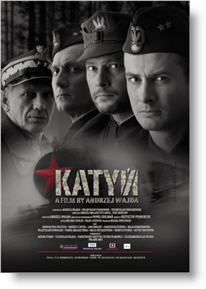
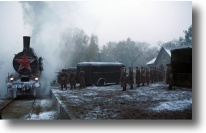
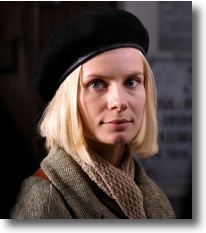
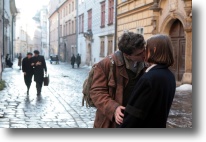
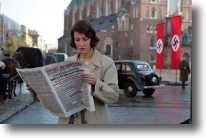
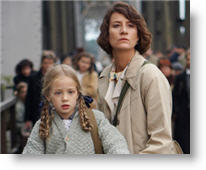
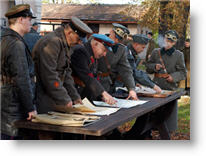
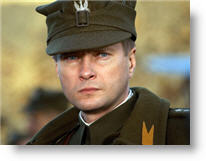
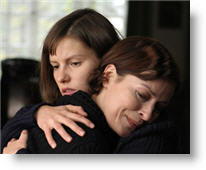
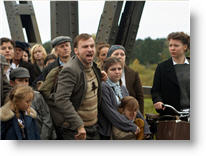
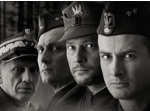
Why does God allow innocent people to suffer? Answer
What about the issue of suffering? Doesn’t this prove that there is no God and that we are on our own? Answer
The Origin of bad—How did bad things come about? Answer
What kind of world would you create? Answer
Does God feel our pain? Answer
What is the Biblical perspective on war? Answer
Are there biblical examples of depression and how to deal with it? Answer
What should a Christian do if overwhelmed with depression? Answer
| Featuring | Artur Zmijewski, Maja Ostaszewska, Andrzej Chyra, Danuta Stenka, Jan Englert, Magdalena Cielecka, Agnieszka Glinska, Pawel Malaszynski, Maja Komorowska, Wladyslaw Kowalski, Oleg Dracz, Oleg Sawkin, Siergiej Garmasz, Antoni Pawlicki, Agnieszka Kawiorska, Joachim Paul Assböck |
| Director | Andrzej Wajda |
| Producer | Michal Kwiecinski |
| Distributor | Akson Studio |
Here’s what the distributor says about their film: “A story of Polish officers murdered by the NKVD in Katyń during World War II. A picture of women unaware of the crime, who were waiting for their husbands, fathers, sons, and brothers. An uncompromising reckoning with the lie of the communist powers, that was to order Poland to forget those who were killed. A film about an invincible struggle for the memory and truth.
The beginning of WW II. After the Nazi Germany’s invasion of Poland, following Joseph Stalin’s order, on September 17, 1939, also units of the Red Army trespassed on Polish soil. Consequently, all Polish officers found themselves in Soviet slavery. Anna, the wife of an Uhlan Regiment captain is waiting for her man, and receives all obvious evidence of his having been murdered by the Russians. The wife of a general, in April 1943, learns of her husband’s death after the Germans discovered mass graves of Polish officers in the Katyń Forest. …”
KATYN, a film by Polish director, Andrzej Wajda, was nominated for a Best Foreign Language Film Oscar in 2008, but did not go into wide release in the U.S. until early 2009.
“Katyn” arrived in theaters during a season dominated by films with Holocaust themes. “Valkyrie,” “Defiance,” “The Reader,” “The Boy in the Striped Pajamas,” and “The Counterfeiters” (an Austrian film which won the Oscar for Best Foreign Language Film in 2008) examined the Third Reich’s moral abyss or used its knavery as a springboard for a heroic adventure story. I didn’t see “Valkyrie,” but in the movie’s TV advertisement, actor Tom Cruise described the film as a thriller about a heroic attempt to confront “the greatest evil known to man … from the inside.” Cruise is right about the “known to man” part. We do know about the crimes committed by Hitler’s Germany, because we have seen the evidence. That evidence was first revealed at Nuremberg in photographic and cinematic form. The oral testimony, however compelling, paled in comparison to the visual imagery of archival photographs and newsreel footage. Since then, that imagery has been copied and re-used in film after film.
In “The Reader”, a tour through a barracks filled with worn empty shoes needs no explanation because we have seen those abandoned shoes so many times before. Claude Lanzmann’s 1985 documentary, “Shoah,” with its 9½ hours of oral personal histories accompanied only by footage of present day locations of what used to be concentration camps and train depots, would make little sense if the images we had already seen over the years had not been ingrained in our psyches. “Shoah” does not stand on its own as a documentary. Only by standing on the shoulders of films that came before it can “Shoah” have the impact it has today.
The Germans in “Katyn” look just like the Germans in “The Damned” and “Raiders of the Lost Ark” and “The Sound of Music” and “Sophie’s Choice” and “Schindler‘s List” and… well, you get the point. There is not a lot of variety or nuance to be found from one Nazi character to the next. Except for Roman Polanski’s “The Pianist” (Thomas Kretschmann‘s portrayal of Captain Wilm Horenfeld), I can’t remember a film in which a Nazi officer is portrayed in more than a one dimensional way. Perhaps Kate Winslet’s SS guard in “The Reader” is an exception; however, we only see her character when she lives in post-war Berlin. We never see her in her wartime post, so we don’t see her wearing an SS uniform or a swastika. Would our feelings for her plight or our ultimate judgment of her have been different if the filmmaker had shown us that image?
Wajda uses the jackboot imagery, too, but it stands in contrast to the relative reserve of the Soviet soldiers who wear sky blue caps and do more peeking than glaring. Stalin’s army contains and conceals its savagery much better than the strutting Germans do, and the Soviets clean up their messes better. The Nazis had a reputation for banal efficiency, but the final scenes of “Katyn” reveal that Stalin’s army, at a minimum equaled, the Nazis’ hard calculation, cold attention to detail, and unquenchable bloodlust.
“Katyn” begins in 1939 when the Nazi-Soviet non-aggression pact made Hitler and Stalin allies. Polish refugees, caught in the middle of both Soviet and German advances, are fleeing in opposite directions on a bridge. German troops are closing in from the west—Russian troops from the east. The Polish army officer corps which consisted of conscripted professors, police, pilots, doctors, lawyers, and priests was overwhelmed and taken prisoner by the two invading armies. The story shifts between the Soviets’ forced transportation of captured Polish officers to a camp in Eastern Poland and ultimately to the Katyn Forest near Smolensk, Russia, and the frustrated attempts of the officers’ families to discover the fate of the officers.
The massacre at Katyn of over 2000 Polish soldiers, each shot in the back of the head or the neck, and pushed into mass graves, was first uncovered by the Germans in 1943 when the Nazis occupied Poland. Josef Goebbels used the film footage of the mass murder victims as a propaganda tool against the Soviets. After the war, when Poland was under Soviet rule, Stalin’s forces used the same film footage but substituted a different soundtrack which put blame for the killings on Germany. Even at the Nuremberg trials, the chief Soviet prosecutor, Roman Rudenko, tried to indict Germany for the Katyn killings, but failed to do so when he did not receive support from the U.S. or Great Britain. In 1990, Russia finally admitted that it was the Red Army, under orders by Stalin, who was responsible for the Katyn massacre. As of today, Russia will still not call the Katyn massacre a war crime, and will not list the Polish soldiers as victims of Stalin’s persecution. Presumably Russia maintains this policy in order to avoid the search, arrest, prosecution and punishment of Russian perpetrators that may still be alive.
The Soviet Union and its collaborators in postwar Poland used propaganda and persecution to keep the truth about Katyn from coming to light. Families of victims were not permitted to say how, or even when, their husbands or fathers or brothers died (Wajda’s own father died in the purge). If a family member put the year 1940 (the actual date of the Katyn killings) on a tombstone instead of 1941 (the “official” Soviet date), that family member was taken away by the Soviet secret police.
Wajda reveals the fates of the Polish officers in pieces, the same way he and other families must have gotten information over the years. The narrative throughout the film is fragmented until the end when Wajda reveals with measured pacing the methodical horror that took place in the forest.
Wajda’s film is uneven. The movie is about a search for truth, but too many people are looking for too many other people. A composite story might have worked better and brought the story into sharper focus. Wajda nonetheless gives a powerful and unforgettable account of another dark moment in the history of the twentieth century. He was a witness to those events, and his witness gives an authority to the story that any other retelling would lack.
“Katyn” portrays a Soviet crime whose banality and savagery rivals the crimes of Nazi Germany. Quantitatively, Soviet Russia surpassed Nazi Germany in terms of human destruction. In the end, Stalin’s body count was greater than Hitler’s. Mao Tse-Tung topped them both. His Great Leap Forward led to forced famines, mass starvation, and the deaths of 60 million Chinese. All this occurred at a time when Mao was lionized as a revolutionary hero in the West. That inconsistency was exploited to grand comic effect in Jean Luc Godard’s 1967 film, “La Chinoise.” In proportional terms, Pol Pot holds the record; he eliminated 26% of the Cambodian population.
In the seminal book, THE BLACK BOOK OF COMMUNISM, published in France in 1997 and in the U.S. in 1999, the authors describe and attempt to enumerate the crimes committed by Communist regimes. They conclude that “the bigger the massacre is, the harder it is to come to terms with; to reduce it to exact numbers”. Stalin put it succinctly when he said that “one murder is a crime; 50,000, a statistic.”
Wajda gives an account of how destructive totalitarian regimes can be, and he shows us how unimaginatively similar they all are. The harm done to the human spirit is made evident in one scene in which a Polish woman, a state official, in surrendering to despair, says: “There will never be a free Poland. Never.”
There is a free Poland now. Andrej Wajda’s “Katyn” is a personal and historic reckoning of a past that is hard for Poland and for the world to face. Evil does not inhabit one country or one political philosophy, or even one costume. Movies have always done a good job exploring the dark side of the human soul. I hope they continue to do so. I just hope they take KATYN’s example and cast a wider net.
Violence: Heavy / Profanity: Mild / Sex/Nudity: None
What kind of world would you create? Why is the world the way it is?
See list of Relevant Issues—questions-and-answers.


PLEASE share your observations and insights to be posted here.